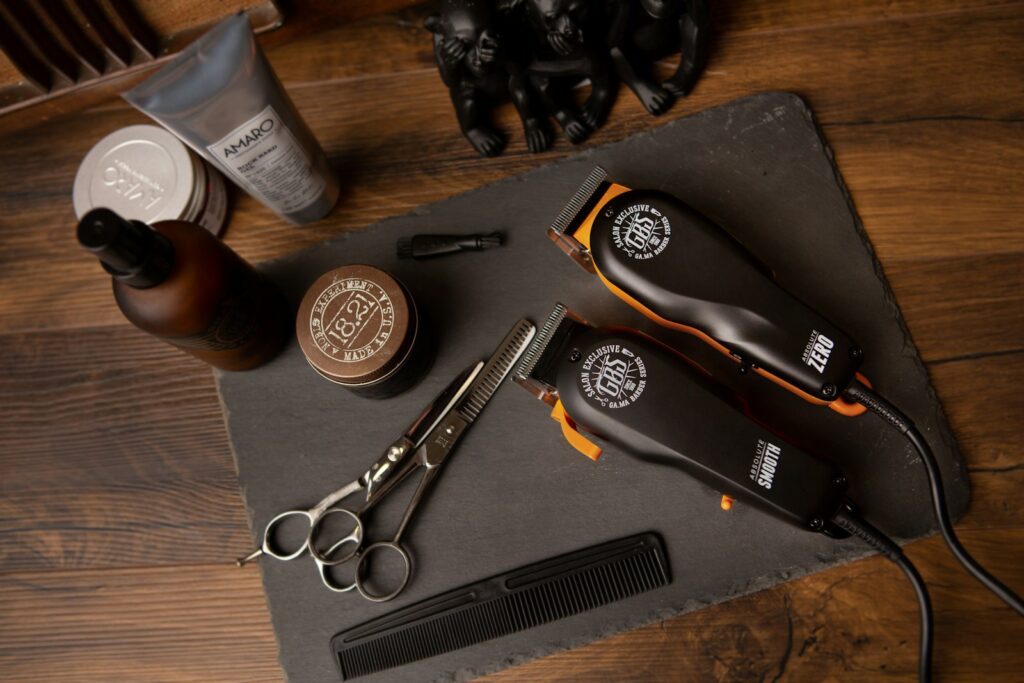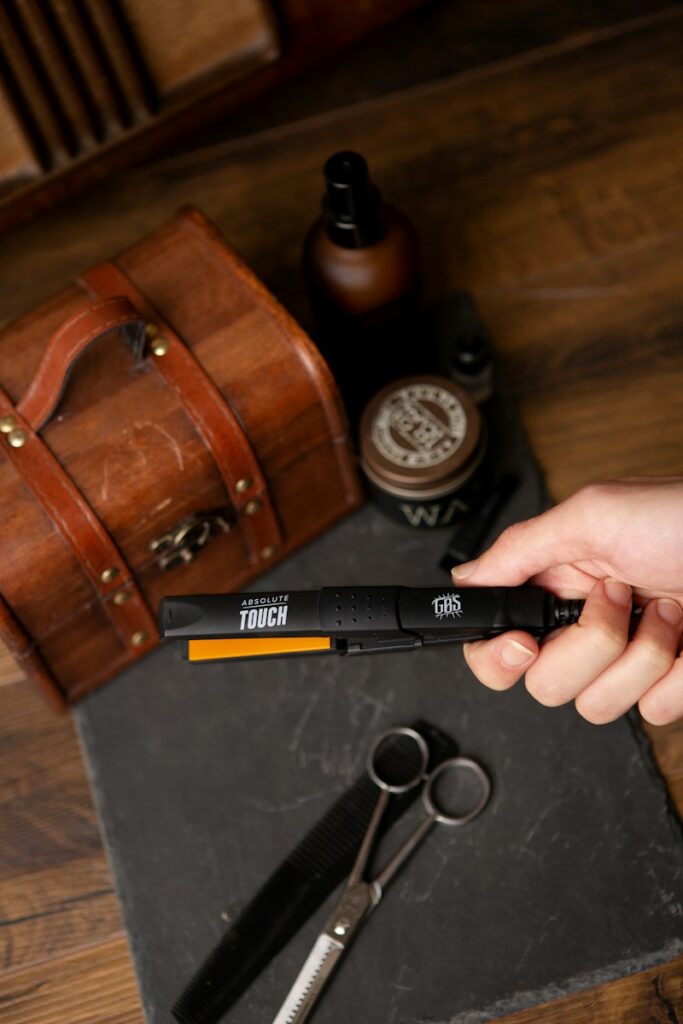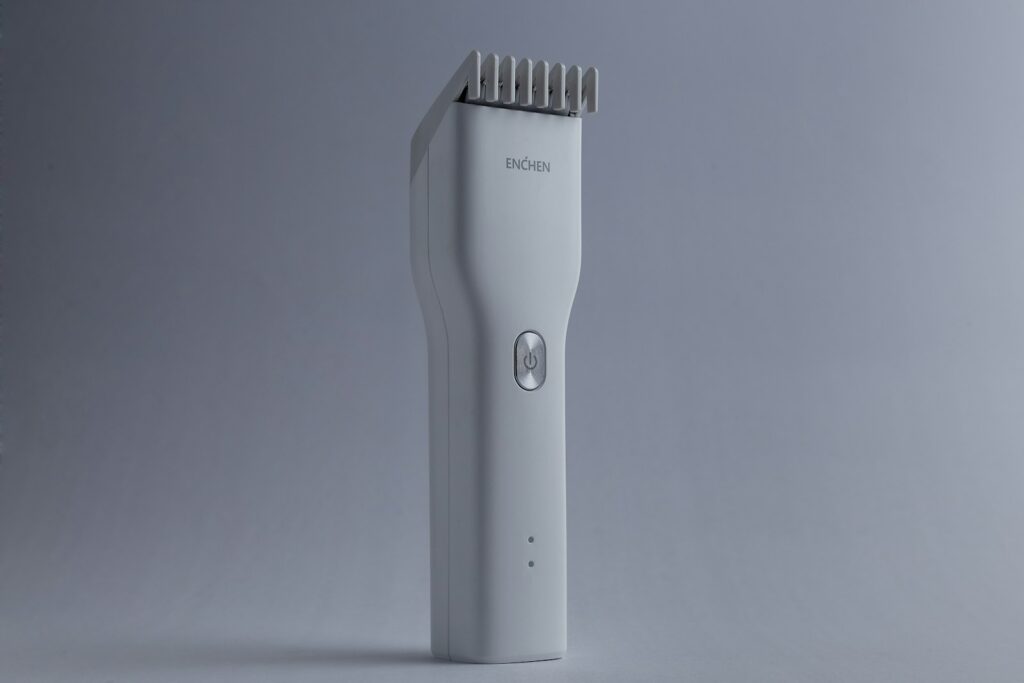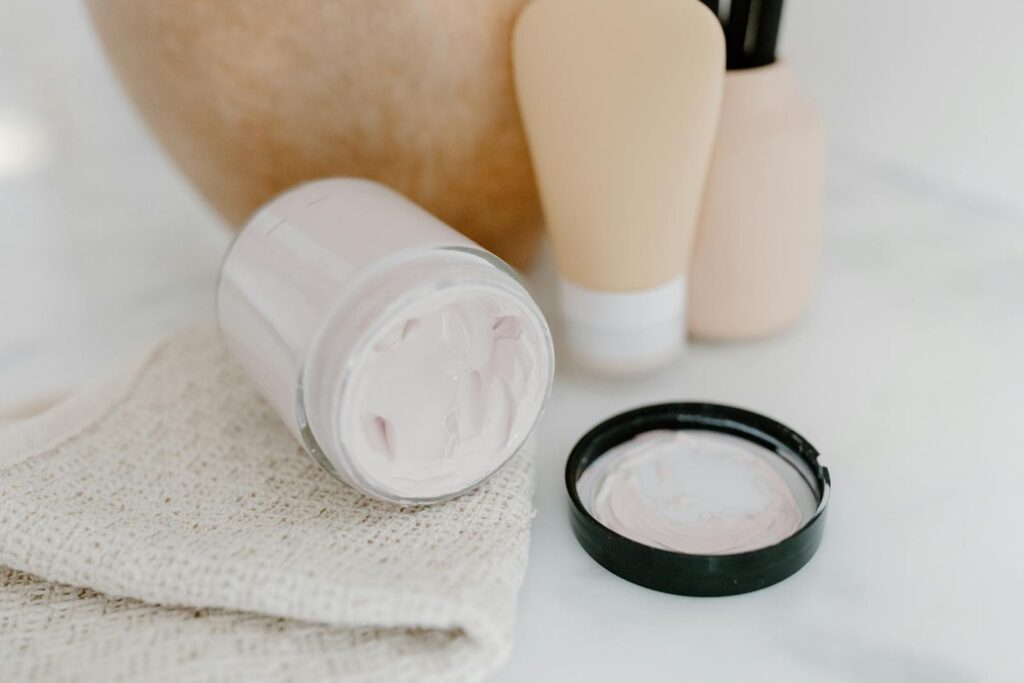Mastering beard growth requires understanding one’s genetics and embracing healthy habits. A balanced lifestyle, including proper nutrition, exercise, and stress management, naturally increases testosterone levels, aiding fuller growth. Patience is essential; resist shaving in the early months to allow the beard to fill in. Quality grooming products, like oils and brushes, play a critical role in nourishment and shaping. But how does one effectively define beard boundaries and discover different styles?
Key Takeaways
- Allow beard to grow naturally for 2-4 months without shaving to establish a strong foundation.
- Apply beard oil regularly to hydrate, soften, and reduce itchiness and dryness.
- Maintain a healthy lifestyle to enhance beard growth, focusing on exercise, nutrition, and stress management.
- Trim neckline above Adam’s apple and cheek lines after sufficient growth for a defined look.
- Use grooming tools like a boar’s brush and utility balm for shine, cleanliness, and control.
Understanding Beard Growth Fundamentals
Understanding beard growth begins with recognizing that age and genetics play vital roles in determining how a beard develops. Typically, the most rapid growth occurs between the ages of 25 and 35.
Genetics influence beard traits such as coarseness, color, and terminal length. Generally, beard hair grows about half an inch each month. Early patchiness is common, and hair often fills in over time, though some patches may be permanent.
Embracing a healthy lifestyle—through exercise, balanced nutrition, adequate sleep, and stress management—can aid in supporting beard growth. Higher testosterone levels, often amplified by weight training, also enhance facial hair development. Understanding the beard growth stages can help manage expectations and improve the overall beard-growing experience.
Proper Beard Growth and Maintenance Practices
As one begins the expedition of beard growth, it’s important to adopt practices that support and maintain this natural process. To cultivate a healthy beard, one should refrain from shaving, allowing the beard to develop naturally over two to four months. Essential to maintenance is the use of beard oil, which hydrates and softens both skin and hair, reducing itchiness and dryness. Regularly cleansing with gentle beard washes prevents dirt buildup without stripping natural oils. It’s advised to co-wash with beard conditioner and limit deep cleansing to a few times weekly. This guarantees a clean, well-nourished beard that’s ready to serve others. Incorporating natural remedies like tea tree oil can alleviate dandruff, promoting a healthier beard environment.
Beard Shaping, Edges, and Styling
While growing a beard can be an exciting expedition, shaping it properly is vital to attain a polished look. Defining edges begins with trimming the neckline and cheek lines.
After 30 days, he should mark the neckline just above the Adam’s apple, shaping it with an electric trimmer or razor. For cheek lines, waiting three months before trimming guarantees a natural look without resembling a chinstrap.
Using an eyeliner or shaping tool provides precision. Mistakes might happen; matching both sides and allowing regrowth before re-trimming helps maintain symmetry.
Consistent trimming and shaping cultivate a refined and intentional beard style.
Beard Care Products and Grooming Tools
To maintain a healthy and well-groomed beard, using the right care products and grooming tools is essential. Beard oil hydrates and softens, preventing itch and dryness. A boar’s hair brush distributes natural oils, promoting shine and cleanliness. Utility Balm offers control and acts as a leave-in conditioner, keeping flyaways in check. These tools serve those who value grooming and want to assist others in their beard expedition.
| Product | Purpose | Benefit |
|---|---|---|
| Beard Oil | Hydration | Softens and nourishes |
| Boar’s Brush | Oil Distribution | Adds shine, removes dirt |
| Utility Balm | Control | Moisturizes and tames |
Growing, Boosting, and Expert Guidance
Beard growth and enhancement are closely linked to healthy lifestyle choices, which include regular exercise, a balanced diet, sufficient sleep, and stress management. These factors naturally elevate testosterone levels, promoting facial hair growth.
Consulting experts can provide valuable perspectives:
- Seek advice from reliable beard barbers for maintaining longer or styled beards.
- Explore free style consultations via text for personalized beard advice.
- Take quizzes to identify your beardsman type and tailor grooming routines.
- Research additional resources like styling guides and shaping tips.
Healthy Lifestyle Choices to Support Beard Growth
When aiming to support beard growth, adopting a healthy lifestyle is essential. Prioritizing exercise, a balanced diet, adequate sleep, and stress management can markedly impact beard health.
Regular physical activity, especially weight training, naturally elevates testosterone, enhancing hair growth.
A nutritious diet rich in proteins, vitamins B, C, D, zinc, and iron supports the hair’s structural integrity and promotes growth.
Biotin, found in supplements or foods, strengthens keratin infrastructure, vital for strong facial hair.
Ensuring sufficient rest and managing stress effectively cultivate an ideal environment for beard development, benefiting not only personal well-being but also those they serve.
Techniques for Defining Beard Boundaries
Maintaining a healthy lifestyle lays the groundwork for strong beard growth, but understanding how to define beard boundaries is equally important for a polished appearance.
Defining these boundaries involves precise trimming and shaping techniques that enhance facial features and maintain a neat look.
Key areas to focus on include the neckline and cheek lines.
Here are some techniques to guide those aiming for a well-defined beard:
- Neckline Definition: Trim above the Adam’s apple for a clean look.
- Cheek Lines: Keep them high to avoid a chinstrap effect.
- Precision Tools: Use trimmers or razors for accuracy.
- Symmetry: Guarantee even trimming on both sides.
Exploring Different Beard Styles and Shaping Techniques
For those venturing into the world of facial hair, exploring different beard styles and shaping techniques can be both exciting and vital for achieving a polished look. Selecting a style that complements one’s face shape and lifestyle is essential. Consider these popular styles:
| Style | Description | Ideal For |
|---|---|---|
| Full Beard | Thick, covers cheeks and chin | Oval or rectangular faces |
| Goatee | Hair on chin and mustache, no cheeks | Round faces |
| Stubble | Short, even length | All face shapes |
| Van Dyke | Mustache and pointed chin beard | Heart-shaped faces |
Using the right tools guarantees precise shaping, enhancing one’s appearance.
Final Thoughts
Mastering beard growth requires understanding genetics and embracing healthy habits. A balanced lifestyle, including proper nutrition, exercise, and stress management, naturally enhances testosterone and promotes fuller growth. Patience is essential, allowing time for the beard to fill in without shaving initially. Quality grooming products, like beard oil and brushes, nourish and shape facial hair. Consistent trimming and defining edges maintain a polished look. By following these practices, one achieves a confident, well-groomed beard.
